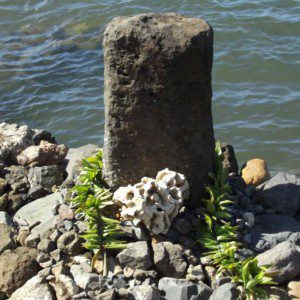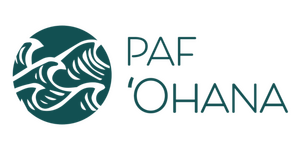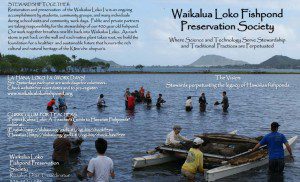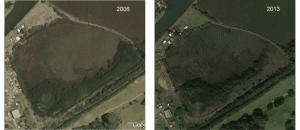E Hō Mai
Composed by: Edith Kekuhikuhipu’uoneo’naali’iokohal
E hō mai ka ‘ike mai luna mai e
O nā mea huna no`eau no nā mele e
E hō mai
E hō mai
E hō mai
Grant us the knowledge from above
Concerning the hidden wisdom of songs,
Grant,
Grant,
Grant us these things
Kumu hula master and Hawaiian cultural and language expert, Edith K. Kanāka`ole (affectionately known as Aunty Edith), composed this oli (chant) for her hula troupe, Hālau O Kekuhi. The chant was originally performed by students at the beginning of class to request knowledge and wisdom from the ancestral deities to accomplish the task at hand.
Today, this oli is commonly used at the start of an event or small gathering to focus a group’s energies and ultimately carry out the kuleana (responsibility) they have undertaken. It is recommended that haumāna (students) use this chant to help them seek knowledge and clear their minds of any negativity.


Ola i ka Hā
Composed by: Frank Kawaikapuokalani Hewett
Ola i ka hā
Ola i ka wai
Ola i ka `I
Hāwai`ī, Hāwai`ī, Hāwai`ī
Wākea ka lani
Papa ka hōnua
No ka lunā, ko lunā
No ka lalo, ko lalo
O ka pono no ia e
E ola kākou a mau loa e
There is life in the breath (hā – Hāloa/kalo)
There is life in the waters (Kāneikawaiola – god of creation)
There is life in the supreme (Kumulipo chant of
Kalaninui`īamamao)
Hā – wai – `ī (reflecting the genealogies of creation of
Hāwai`i, God, the environment and humankind)
Wākea of the heavens
Papa of the earth
For up belonging up
For down belonging down
It is the “Natural Order”, May we live forever
Ola i ka hā
The first line is a reflection of the legend of the origin of the kalo, the child of Wākea and Ho`ohōkükalani who soon after birth expired. This child was buried near their home and from his body grew forth the kalo plant. A second son was born to Wākea and Ho`ohōkükalani and he became the father of the human race. Like his elder brother, he was also named Hāloa with the epithet nakalaukapalili added to his name. The first birth of the first Hāloa established the tradition of the senior line in the Hawaiian tradition, and the birth of the second Hāloa established the tradition of the junior line subservient to the senior line, humankind as custodians to the gods who manifest in nature/environment. The word hā used in the first line is a reflection of the names Hāloa and Hāloanakalaukapalili.
Ola i ka wai
The second line is a reflection of the god, Kāne, the god of creation. Kāne has many forms, which include the water, the sunlight, and the rainbow. Kāne is the giver of life and not the taker of life, therefore no human sacrifices were offered to him. He is at the zenith in the pantheon of gods and the other gods are said to be lesser manifestations of him. Kāne worship incorporated shrines with sacred upright stones where prayers and offerings were left.
In order for the kalo to grow tall and strong it needs both water and sunlight, both manifestations as mentioned earlier of the god, Kāne. An ancient proverb states, “Pü`ali`ali kalo i ka wai `ole,” without water the kalo grows misshapen or crooked. Kāne in the form of water not only provides sustenance for good healthy growth of the kalo but also provides sustenance – the same for mankind.The word “wai,” in the second line, is a reflection of the god, Kāneikawaiola – the god of the living or healing waters.
Ola i ka ‘ī
The third line is a reflection of the Kumulipo chant used as a prayer when chief Lonoikamakahiki was dedicated to the gods soon after birth. The honors of Kapu, Wela, Hoano and Moe were conferred to him by his father, Keawekekahiali`iokamoku, King of Hawaiʻi. After the ceremony his name was changed to Ka-`ī-`i-mamao. The third line also reflects the name of ʻīo, the tradition of one supreme deity connected to the worship of the `io (hawk) and the pueo (owl).
Hāwai`ī, Hāwai`ī, Hāwai`ī
The fourth line connects the three components, the hā, the wai and the ʻī in the name Hāwai`ī;the breath or the air that we breathe, the water that we drink and god/goddess most superior. Air and water sustain life created through the god. Aunty Emma deFries explained that island names that end with (ʻi) such as Hāwai`i, Mau`i, Moloka`i, Lāna`i and Kaua`i were so named because the ruling chiefs worshipped the supreme god, ʻIo.
`Io was referred to as `ī-o-na-lani-nui-a-mamao (the Supreme most god of the great heavens and beyond.). Aunty Emma asked to always keep this tradition close at heart.
Wākea ka lani, Papa ka hōnua, No ka luna ko luna, No kalalo ko lalo and`O ka pono no ia e
The fifth, sixth, seventh, eighth and ninth lines reflect the “natural order” of our gods, environment and people. To everything there is a natural or proper order. There is a beginning and an end, a top and a bottom, a male god and a female counterpart. There is harmony, balance and unity. The gods are at the top of the triad followed by the environment and then humankind. The same order is reflected in the social structure as established in the kapu system, ali`i, kahuna, maka`āinaaā and kauwā along with terms and roles within the `ohana such as küpuna, mākua, ‘ōpio, keiki and kamaiki. From the top to the bottom, all is in its proper place. This is truly our pono. Not as translated as the word, “righteousness,” but the natural order as allotted like mana by the god/goddess.
The tenth line reflects the life, health and healing, which we attribute to our gods. The kalo and the human race were born from Wākea and Ho`ohōkükalani. The life force is in the manifestations of the god Kāne, the sun, the air and the rainbow. All of this is perpetuated by the pono, the natural order, the balance and the unity.
(Mana`o from Frank Kawaikapuokalani Hewett)
Oli Mahalo
Composed by: Kehau Camara—
`U hola `ia ka maka loa la
Pü`ai ke aloha la
Küka`i`ia ka Hāloa la
Pā wehi mai nā lehua
Mai ka ho`oku`i a ka hālāwai la
Mahalo, e nā akua
Mahalo, e nā küpuna la ea
Mahalo, me ke aloha la
Mahalo, me ke aloha la
To spread forth, open up the most fine quality mat
Exchange/share as potluck or aloha
Exchange as greetings (between man and wife and
descendants)
To adorn with the lehua flower
From East to West; sunrise to sunset, we are
discoverers, navigators, take care of our ʻāina
We thank our creators
We thank our ancestors
We thank you with love
We thank you with love
This oli was composed as a greeting of thanks for hospitality, love, generosity and knowledge that is given to us. It also gives thanks to the beauty of the islands and our people. Hāloa is ever-lasting breath. The kalo plant is considered our ancestor that is cherished and preserved. Makaloa is the finest mat woven. It is considered higher quality than lau hala. The message is that it’s important for us to practice being “thankful” every day




